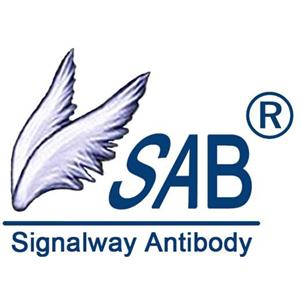简写:DNAJC13
别名:FLJ25863; KIAA0678; RME8; DnaJ domain-containing protein RME-8
检测范围:0.78-50 ng/mL
产品概述:DNAJC13, Contains 1 J domain. DnaJ/Hsp40 proteins have been preserved throughout evolution and are important for protein translation, folding, unfolding, translocation, and degradation, primarily by stimulating the ATPase activity of chaperone proteins, Hsp70s. Because the ATP hydrolysis is essential for the activity of Hsp70s, DnaJ/Hsp40 proteins actually determine the activity of Hsp70s by stabilizing their interaction with substrate proteins. DnaJ/Hsp40 proteins all contain the J domain through which they bind to Hsp70s and can be categorized into three groups, depending on the presence of other domains. Six DnaJ homologs have been identified in Escherichia coli and 22 in Saccharomyces cerevisiae. Genome-wide analysis has revealed 41 DnaJ/Hsp40 family members in humans.
特异性:This assay has high sensitivity and excellent specificity for detection of Human DNAJC13. No significant cross-reactivity or interference between Human DNAJC13 and analogues was observed.
回收率:Matrices listed below were spiked with certain level of recombinant Human DNAJC13 and the recovery rates were calculated by comparing the measured value to the expected amount of Human DNAJC13 in samples.
线性:The linearity of the kit was assayed by testing samples spiked with appropriate concentration of Human DNAJC13 and their serial dilutions. The results were demonstrated by the percentage of calculated concentration to the expected.
稳定性:The stability of ELISA kit is determined by the loss rate of activity. The loss rate of this kit is less than 5% within the expiration date under appropriate storage condition. The loss rate was determined by accelerated thermal degradation test. Keep the kit at 37°C for 4 and 7 days, and compare O.D.values of the kit kept at 37°C with that of at recommended temperature. (referring from China Biological Products Standard, which was calculated by the Arrhenius equation. For ELISA kit, 4 days storage at 37°C can be considered as 6 months at 2 - 8°C, which means 7 days at 37°C equaling 12 months at 2 - 8°C).
测试原理:This assay employs a two-site sandwich ELISA to quantitate DNAJC13 in samples. An antibody specific for DNAJC13 has been pre-coated onto a microplate. Standards and samples are pipetted into the wells and anyDNAJC13 present is bound by the immobilized antibody. After removing any unbound substances, a biotin-conjugated antibody specific for DNAJC13 is added to the wells. After washing, Streptavidin conjugated Horseradish Peroxidase (HRP) is added to the wells. Following a wash to remove any unbound avidin-enzyme reagent, a substrate solution is added to the wells and color develops in proportion to the amount of DNAJC13 bound in the initial step. The color development is stopped and the intensity of the color is measured.





